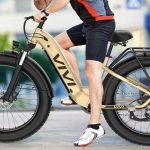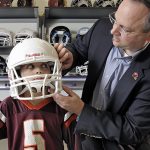McDavid said its Ultralight 195 ankle brace, best known for protecting basketball players, is finding favor with professional and amateur tennis players as well.
“The one thing that is for sure is that when I have an ankle issue, I immediately go to my tennis bag and I take out my McDavid ankle brace so I can reduce the pain,” said former Florida State and 2x All-ACC member Vahid Mirzadeh. “I usually play with the ankle braces until I feel my ankle has healed and then I take the brace off. The ankle brace helps my initial sprained areas to heal because the brace is set up so you don't use the injured muscles as much and supports the injured areas.”
The former Arthur Ashe Leadership and Sportsmanship Award Winner will begin his professional career by protecting his ankles with the Ultralight 195. Mirzadeh says he's seen a lot of the top players in the world also reaching in their bag and pulling out the Ultralight 195.
“The advantages are that the ankle brace most importantly has a comfortable feel to it,” said Mirzadeh. “I don't feel like the ankle brace limits my performance because the lightweight feel it has, allows me to move the same as I would when I don't have a brace on. McDavid ankle braces also aid to minimize the pain I have when I have a twisted or sprained ankle.”
“We feel that the McDavid Ultralight 195 brace is the best on the market and that has been proven through extensive research,” said McDavid Marketing Director Rey Corpuz. “The brace is intended for athletes who are in constant motion and use their feet during competition. Using the Ultralight 195 in tennis can be a huge help in keeping a player on the court instead of in the training room.”
The McDavid Ultralight 195 ankle brace was recently praised as part of a year-long study done by the University of Wisconsin, Madison, which shows that athletes who wore McDavid ankle braces were 3 times less likely to get injured during the time of the study. There were 1470 athletes overall that participated in this study; the largest study of its kind involving ankle-related injuries on high school students.
Furthermore, the study also proved that the effectiveness of lace-up braces is independent of an athlete’s injury history. This combats the previously-held notion (from studies using alternative types of intervention products) that braces are more effective in athletes with a previous history of injury than those without.









